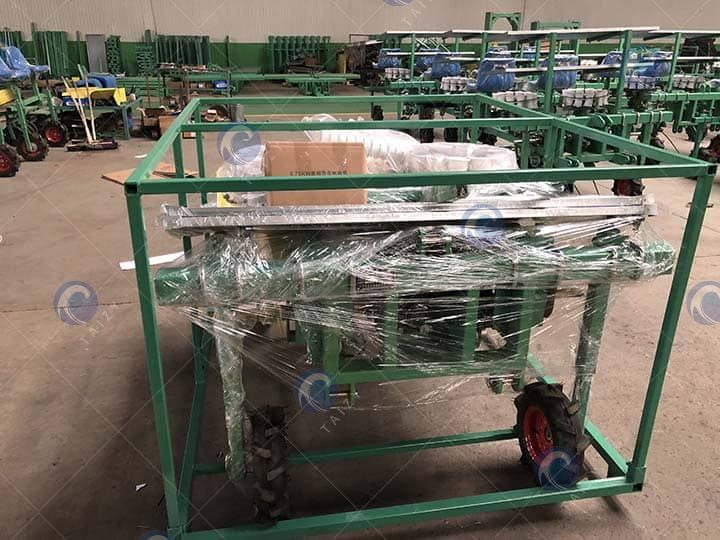Transplantador de vegetais vendido para a América
Hoje em dia, os transplantadores de vegetais são as máquinas que a maioria dos agricultores precisa para cultivar. Com o desenvolvimento contínuo da tecnologia agrícola, tornou-se um fenômeno comum que o plantio agrícola exija máquinas.
Por exemplo, a maioria das frutas e vegetais são agora cultivados em estufas. E porque o máquina de mudas de viveiro tem as características de alta eficiência e alta taxa de sobrevivência de mudas. Portanto, o uso de máquinas de plantio em viveiros também se tornou uma obrigação para os produtores de estufas. As mudas maduras subsequentes requerem um espaço maior. Portanto, devemos transplantar as mudas para o campo.
E se você quiser fazer o trabalho com eficiência, usar um transplantador é uma boa escolha. Transplantadores de vegetais estão disponíveis em vários estilos. Assim, as pessoas podem escolher o transplantador que melhor se adapta às suas necessidades. Nos últimos anos, nossos transplantadores foram vendidos para muitos países estrangeiros e receberam seu apoio e amor.
Qual é o processo para o cliente adquirir o transplantador de vegetais?
O cliente é dos Estados Unidos e é da Tanzânia. Ele morou nos Estados Unidos por 17 anos. Ele cultiva 700 acres de cebola e 200 acres de tomate, arroz, milho e milho. A fim de melhorar a eficiência da produção e economizar custos trabalhistas. Ele quer comprar de nós transplantadores de tomate e máquinas de mudas de cebola.
Após um entendimento completo das necessidades do cliente. Recomendamos aos nossos clientes o transplantador de tomate de quatro fileiras e o transplantador de cebola autopropelido de 6 fileiras. Além disso, ele também precisa de um transplantador de arroz e de um colheitadeira de milho.
Como há muitos pontos a confirmar, todo o nosso processo de comunicação é longo. Principalmente em relação ao espaçamento entre linhas e espaçamento entre plantas. Precisamos personalizar a máquina de acordo com a situação real dos clientes.
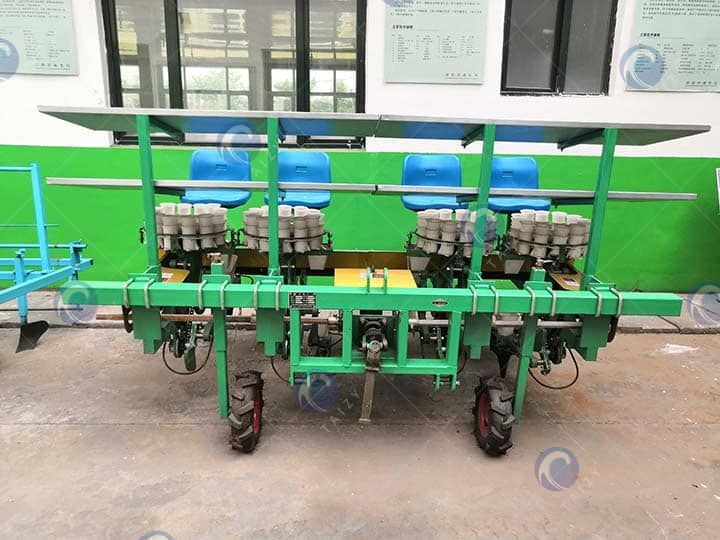
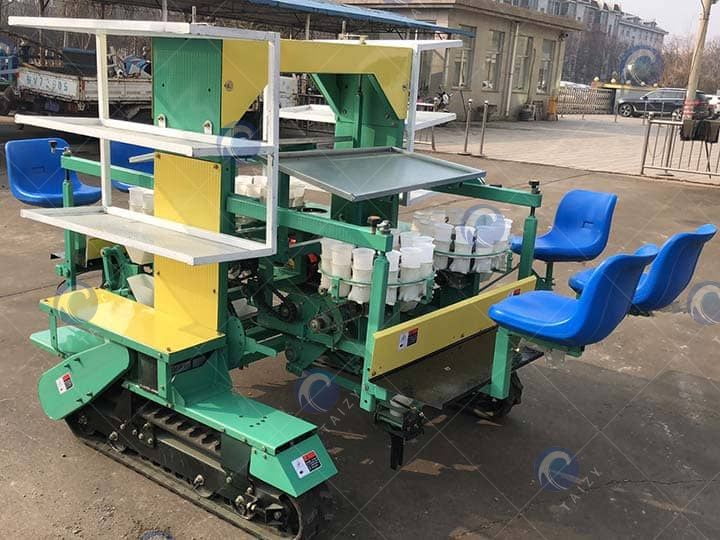
Princípio de funcionamento do transplantador vegetal autopropelido
Coloque manualmente as mudas nos copos de alimentação, uma por uma. E então acionado pelo mecanismo de transporte, o copo de alimentação de mudas se move para a posição de lançamento de mudas. A seguir, a válvula na parte inferior do copo de mudas é aberta sob a ação do mecanismo de controle. E as mudas caem na porta de alimentação de mudas do tubo guia de mudas. As mudas caem livremente no tubo guia de mudas. E, finalmente, as mudas caem na vala aberta.
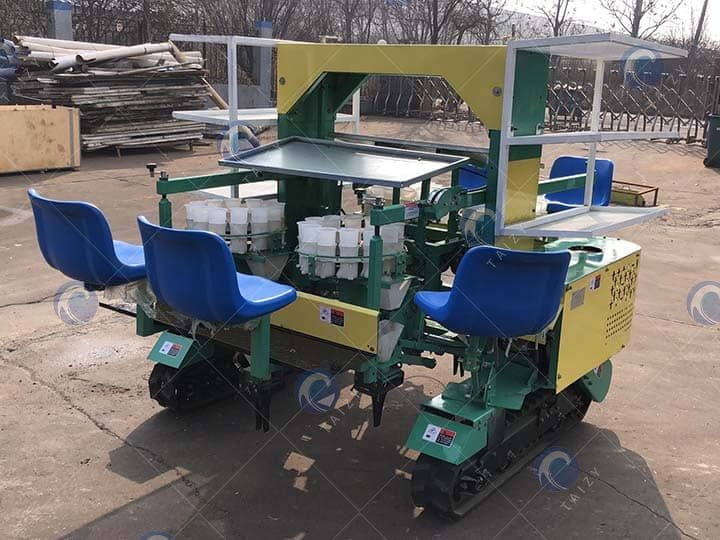
Qual é o fluxo de trabalho do transplantador vegetal portátil?
1. Primeiro, o pessoal senta-se no assento da máquina. Em seguida, ligue a máquina.
2. O agricultor coloca as mudas na bandeja de mudas no copo de mudas.
3. Em seguida, o dispositivo de transplante coloca as mudas na vala de mudas.
4. Durante todo o processo, os agricultores vão repetindo a ação de colocar mudas. E a máquina continua funcionando ao mesmo tempo.
Especificações Técnicas do transplantador de tomate
| Modelo | 2ZBLZ-6 |
| Peso (kg) | 1050 |
| Estrutura | rastreador automotor |
| Ferramenta de plantio | o copo pendurado na boca do pato |
| Espaço da planta (cm) | 8-20 |
| Espaço entre linhas (cm) | 15-20 |
| Altura da muda (cm) | 10-20 |
| Linhas | 6 |
| Operador | 4 |
| Potência (kw) | 7.5 |
| Modelo | 2ZBX |
| Espaçamento entre plantas (cm) | 20-50 |
| Espaçamento entre linhas (cm) | 25-50 |
| Linha | 4 |
| Trator (CV) | >=50 |
| Capacidade(㎡/h) | 2664 |
Por que usar um equipamento transplantador de sementes?
1. O transplante mecânico pode garantir melhor o espaçamento entre plantas e entre linhas. E a profundidade é consistente, melhorando assim a qualidade e o rendimento da colheita.
2. Há menos contato entre mudas e instituições. Portanto não é fácil danificar as mudas.
3. A adaptabilidade da máquina é ampla. Pode transplantar uma variedade de vegetais, frutas e plantas.
4. A máquina tem alta eficiência de trabalho. Assim, os agricultores podem economizar muito tempo e esforço.
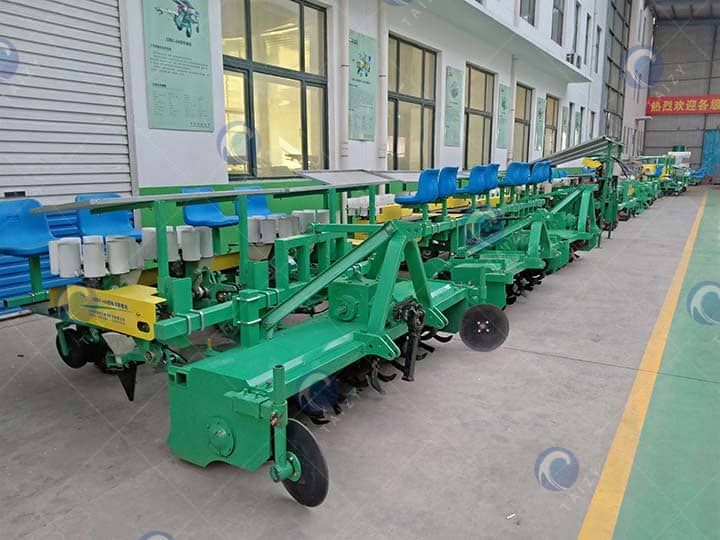
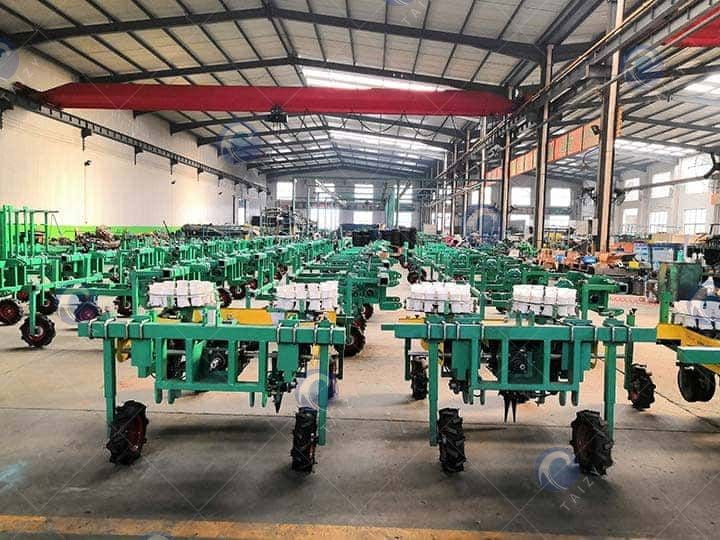
Perguntas frequentes
1. Qual é a potência da máquina??
A potência autopropelida é um motor a gasolina. O tipo rastreador é um grande motor a gasolina ou diesel. As transplantadoras rebocadas são acionadas pela tomada de força do trator.
2. O espaçamento entre linhas e entre plantas é fixo?
O espaçamento entre plantas pode ser ajustado dentro de um determinado intervalo. O espaçamento entre linhas precisa ser personalizado.
3. A máquina pode adicionar outras funções além do transplante?
Pode. Outras funções adicionais são fertilização, crista, preparo rotativo, irrigação, cobertura morta, transplante e colocação de fita de irrigação por gotejamento.
4. A máquina pode ser personalizada?
Sim, claro. Personalizaremos peças relevantes de acordo com as necessidades específicas dos clientes.
5. A máquina pode trabalhar em cumes?
Sim. A máquina pode trabalhar em campos planos e estriados.
